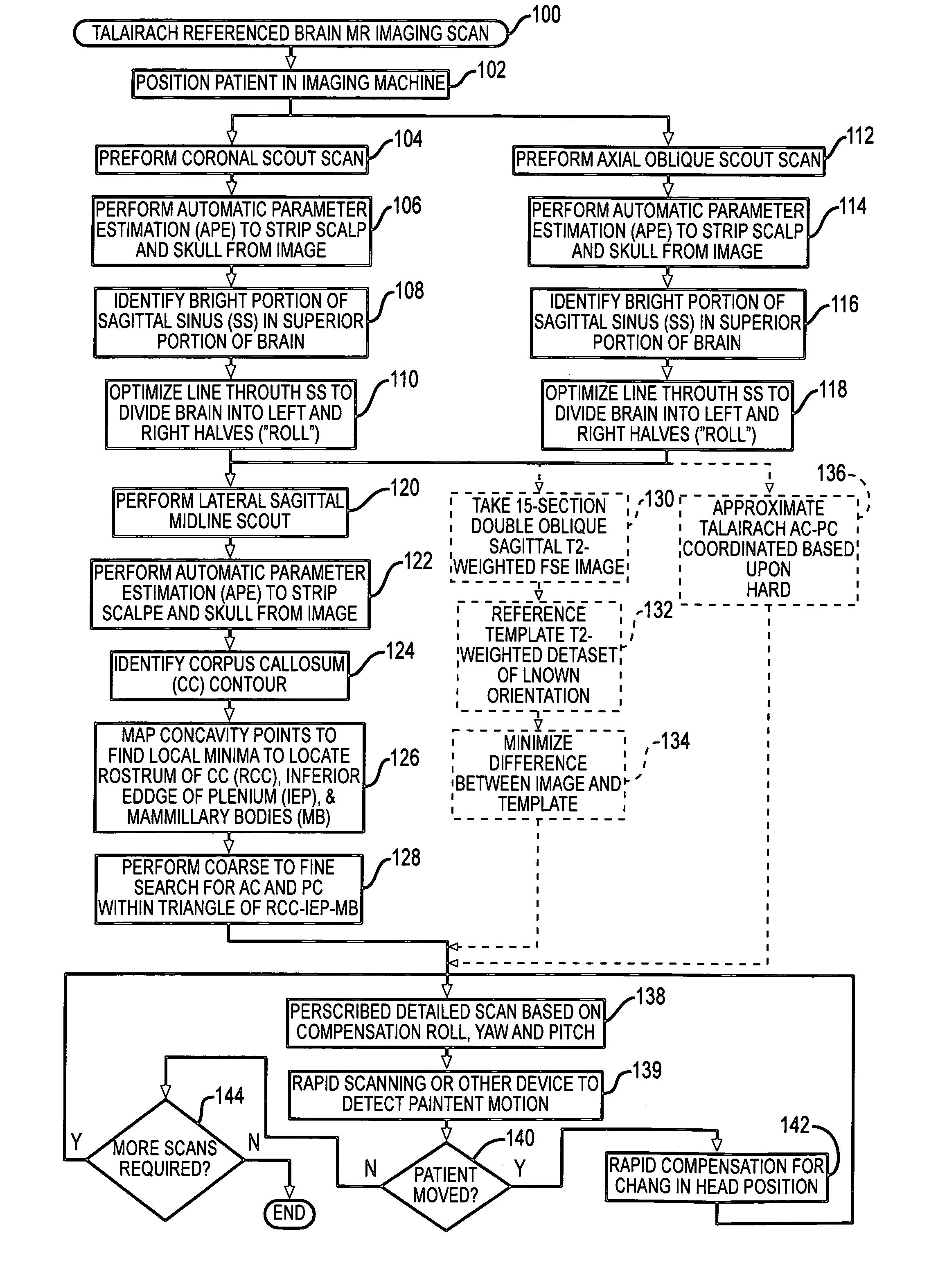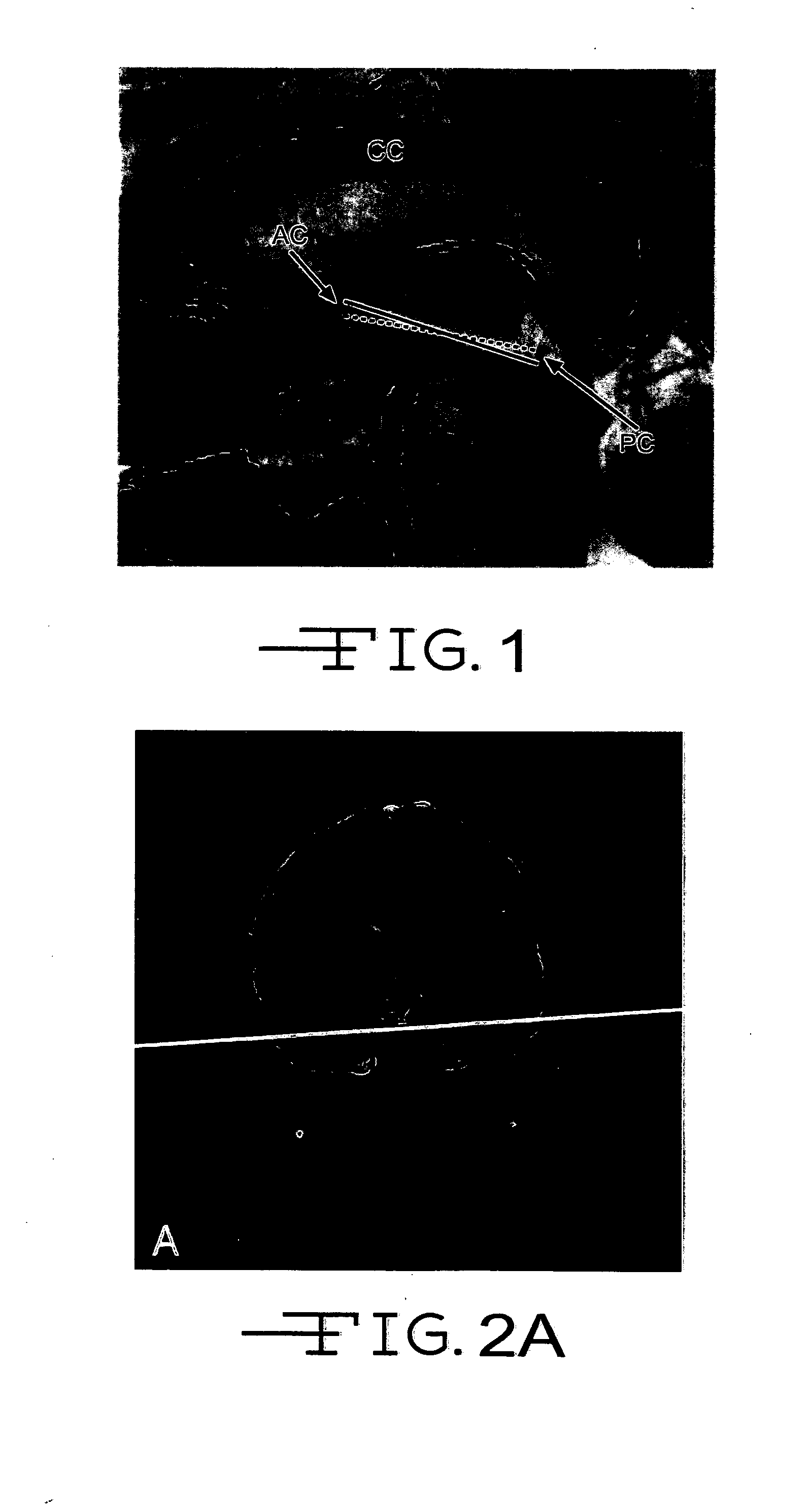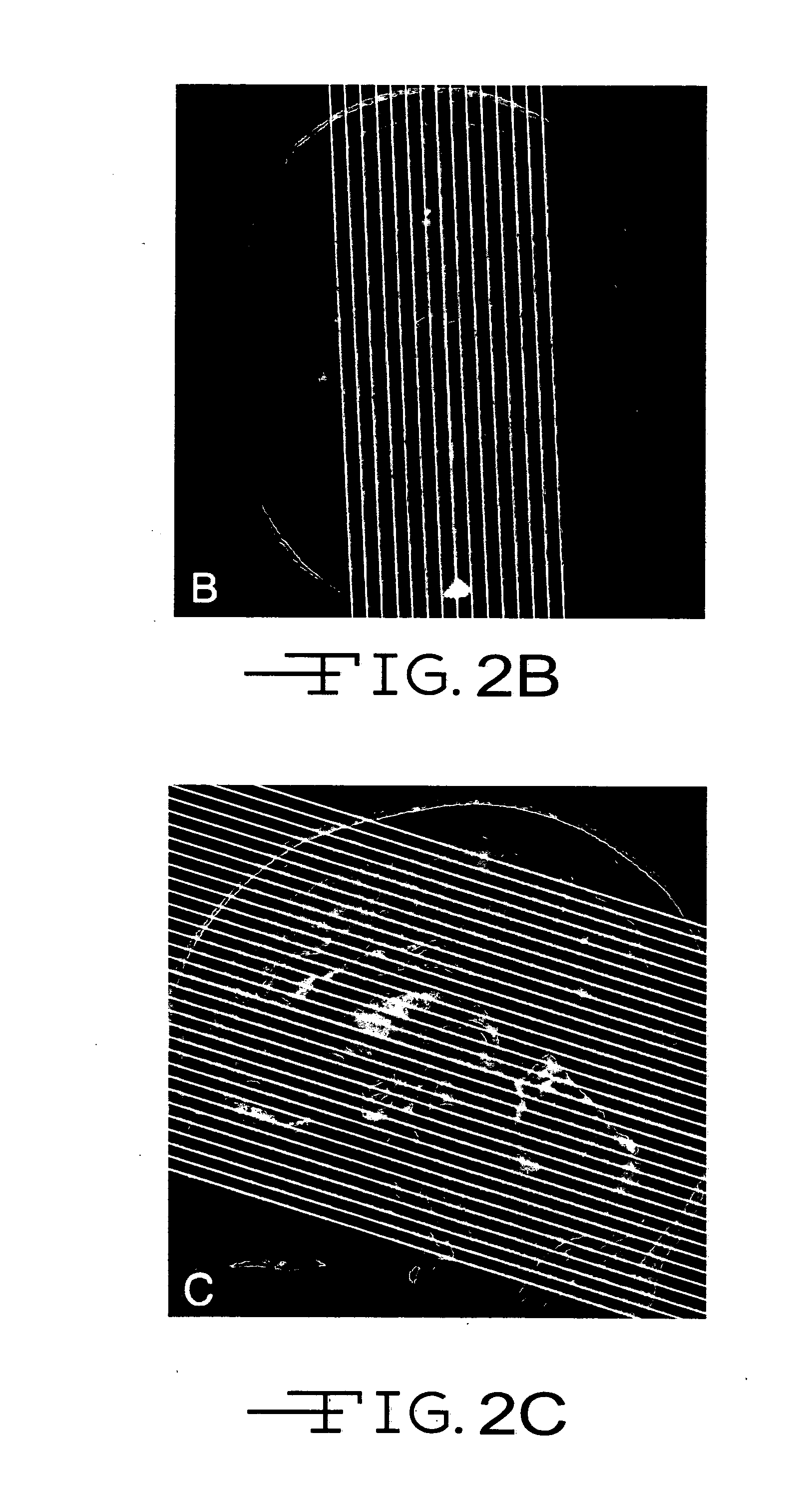Automated brain MRI and CT prescriptions in Talairach space
a brain and talairach space technology, applied in the field of automatic brain mri and ct prescriptions in talairach space, can solve the problem that clinical diagnostic imaging still requires a significant amount of time to perform a detailed scan, and achieve the effect of minimizing intra- and inter-patient positioning variability
- Summary
- Abstract
- Description
- Claims
- Application Information
AI Technical Summary
Benefits of technology
Problems solved by technology
Method used
Image
Examples
Embodiment Construction
[0021] BACKGROUND AND PURPOSE: Variability in patient head positioning may yield substantial inter-study image variance in the clinical setting. We describe and test three-step technologist and computer-automated algorithms designed to image the brain in a standard reference system and reduce variance.
[0022] METHODS: Triple oblique axial images obtained parallel to the Talairach anterior commissure (AC)-posterior commissure (PC) plane were reviewed in a prospective analysis of 126 consecutive patients. Requisite roll, yaw, and pitch correction, as three authors determined independently and subsequently by consensus, were compared with the technologists' actual graphical prescriptions and those generated by a novel computer automated three-step (CATS) program. Automated pitch determinations generated with Statistical Parametric Mapping '99 (SPM'99) were also compared.
[0023] RESULTS: Requisite pitch correction (15.20±10.20) far exceeded that for roll (−0.6±3.70) and yaw (−0.9±4.70) ...
PUM
 Login to View More
Login to View More Abstract
Description
Claims
Application Information
 Login to View More
Login to View More - R&D
- Intellectual Property
- Life Sciences
- Materials
- Tech Scout
- Unparalleled Data Quality
- Higher Quality Content
- 60% Fewer Hallucinations
Browse by: Latest US Patents, China's latest patents, Technical Efficacy Thesaurus, Application Domain, Technology Topic, Popular Technical Reports.
© 2025 PatSnap. All rights reserved.Legal|Privacy policy|Modern Slavery Act Transparency Statement|Sitemap|About US| Contact US: help@patsnap.com



